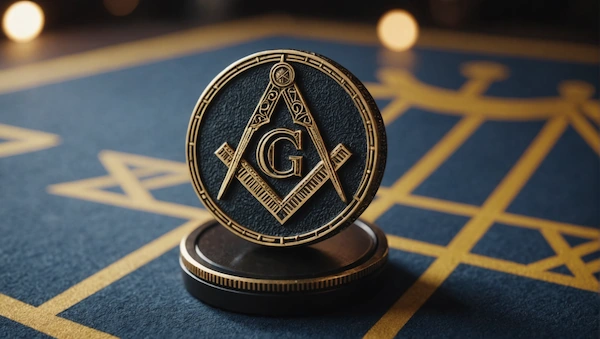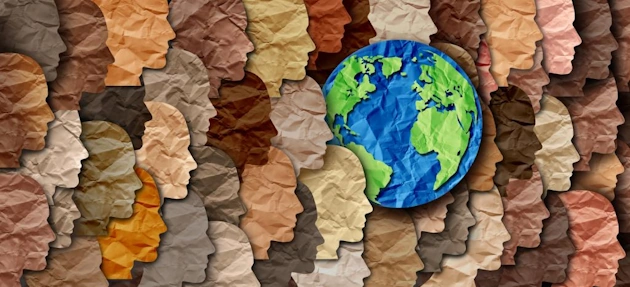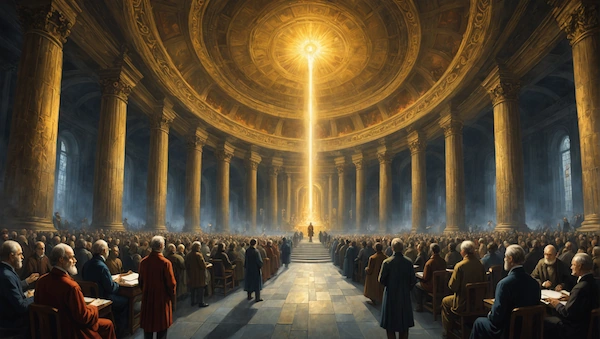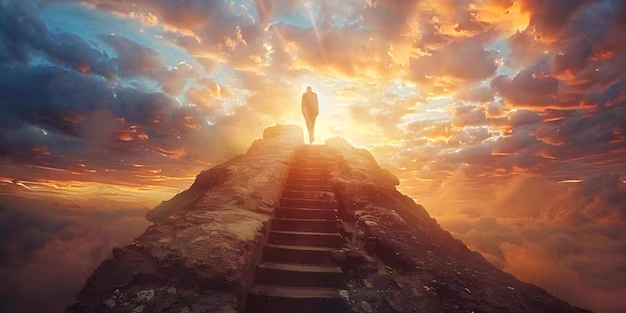
The Enigma Unveiled: An Introduction
Shrouded in mystery and steeped in centuries of whispered speculation, Freemasonry stands as perhaps history’s most enduring enigmatic brotherhood—a fraternal organization whose very name evokes both fascination and suspicion. Neither merely a social club nor simply a charitable organization, Freemasonry represents a complex tapestry woven from threads of ancient wisdom, philosophical inquiry, and symbolic language. Its inner workings have simultaneously attracted luminaries throughout history while spawning endless conjecture about its true purposes and influence.
This fraternity exists at the intersection of the mundane and the metaphysical—a bridge between practical ethics and transcendent wisdom that has weathered the storms of religious persecution, political upheaval, and cultural transformation. What began within the humble guilds of working stonemasons evolved into a sophisticated system of moral education and spiritual unfoldment that continues to intrigue seekers of truth across the globe.
The following exploration delves beyond superficial accounts of Masonic history, penetrating the veil of allegory to examine not only what Freemasonry appears to be, but what it aspires to embody. Through a critical yet balanced lens, we will trace its transformation from operative craft to speculative science, decode its rich symbolic language, and contemplate both its stated principles and the deeper currents that have sustained its relevance across centuries of human experience.
Genesis of the Craft: From Stone to Spirit
The Metamorphosis from Operative to Speculative
The story of Freemasonry’s emergence cannot be separated from the profound societal transformations that swept across Europe in the late medieval and early Renaissance periods. As the great cathedrals of Europe reached toward heaven, the guilds of stonemasons who built them cultivated not only technical expertise but also a sense of sacred geometry—the mathematical and symbolic principles that infused their work with cosmic meaning. These were not merely workers but artisans whose craft connected the material and spiritual realms through the creation of sacred spaces.
The transition from operative to speculative Masonry represents one of history’s most fascinating cultural evolutions—a transformation whereby the physical tools of the mason’s trade were gradually reinterpreted as instruments for ethical and spiritual development. This shift coincided with the Renaissance reawakening of Hermetic, Neoplatonic, and Kabbalistic traditions that had been largely dormant throughout medieval Europe. The intellectual ferment of this period created a fertile environment for the symbolic reinterpretation of the mason’s craft.
Evidence of this transition appears in the earliest surviving Masonic manuscripts, such as the Regius Poem (circa 1390) and the Cooke Manuscript (circa 1410), which reveal how practical instructions for stonemasons were increasingly accompanied by moral and philosophical teachings. As the need for cathedral builders waned, the lodges began accepting “accepted” or non-operative members—learned individuals who were drawn to the rich symbolism and ethical framework of the craft rather than its practical application in construction.
The Sacred Geometry of Character Formation
What distinguished nascent Freemasonry from other fraternal organizations was its systematic use of architectural symbolism as a framework for character development. The cathedral builder’s art became a blueprint for the construction of the inner temple—the perfection of human character through conscious effort and divine assistance. The practical tools of the operative mason thus underwent a profound transformation:
The 24-inch gauge transcended its use as a measuring device to become a symbol of the appropriate division of the twenty-four hours of the day, reminding the speculative Mason to balance labor, rest, and service to others.
The common gavel, once used to break off rough edges from stones, was reimagined as an instrument for chipping away character flaws and unruly passions—the “superfluous knobs and excrescences” that prevent the soul from achieving its perfect cubic form.
The trowel, which spread cement to unite stones, became emblematic of brotherly love and the spiritual bonds that unite humanity across artificial divisions of religion, politics, and social class.
This transformation of practical implements into spiritual symbols reflects the Neoplatonic concept that visible forms are reflections of eternal archetypes—a philosophical perspective that heavily influenced Renaissance thinking and, by extension, early speculative Masonry. The lodge itself became a microcosm of the universe, oriented to the cardinal directions with specific officers representing celestial bodies and cosmic principles.
The Emergence of Formalized Ritual
The years between 1600 and 1700 witnessed the gradual formalization of Masonic ritual and structure. While membership remained predominately Scottish and English, lodges began keeping more detailed records of their proceedings. The Edinburgh Register House MS (1696) provides one of the earliest descriptions of Masonic ritual, revealing how catechetical instruction—questions and answers—was used to transmit Masonic knowledge and test the qualifications of members.
These rituals integrated elements of medieval guild practices, Renaissance Hermeticism, and Christian mysticism into a cohesive system of moral instruction. Centered around the construction of King Solomon’s Temple—itself laden with symbolic significance in Jewish, Christian, and Hermetic traditions—the rituals guided initiates through a progressive series of symbolic experiences designed to stimulate moral reflection and spiritual awakening.
The concept of “making good men better” emerged as a central tenet during this period, reflecting the underlying belief that human nature, while inherently noble, requires conscious refinement. This progressive view of human potential resonated strongly with Enlightenment ideals that would soon transform European society.
The Grand Architecture: Formal Organization and Expansion
The Crucible of 1717: Birth of the Grand Lodge
The gathering at the Goose and Gridiron tavern in St. Paul’s Churchyard, London, on June 24, 1717, marked a watershed moment in Masonic history. Four existing lodges united to form the first Grand Lodge, establishing a centralized authority that would standardize practices and provide administrative coherence to what had previously been a loose confederation of independent lodges. This event, occurring on the symbolic feast day of St. John the Baptist, represented not merely an organizational restructuring but a philosophical statement about the nature and purpose of the fraternity.
This nascent Grand Lodge embodied Enlightenment principles of rational governance and progressive thinking. Led by notable figures including John Theophilus Desaguliers—a Huguenot refugee, Natural philosopher, and member of the Royal Society—the early Grand Lodge sought to position Freemasonry as an intellectual and moral force aligned with scientific rationalism and religious tolerance. Desaguliers, who served as the third Grand Master, exemplified the intersection of scientific inquiry and spiritual search that characterized the intellectual climate of early 18th century England.
The formation of the Grand Lodge coincided with a period of religious tension in England following the Glorious Revolution of 1688, which had established Protestant supremacy but left religious divisions simmering beneath the surface of society. Against this backdrop, Freemasonry’s emphasis on universal brotherhood transcending sectarian differences represented a radical alternative to the religious exclusivity that had fueled a century of European conflict.
Anderson’s Constitutions: Codifying the Ancient Wisdom
The publication of James Anderson’s “Constitutions of the Free-Masons” in 1723 represented far more than a mere compilation of regulations. This seminal text presented a mythologized history of Freemasonry that traced its lineage through biblical figures, ancient civilizations, and medieval guilds—essentially claiming that Masonic wisdom represented the pure, uncorrupted core of divine knowledge transmitted through history’s greatest minds.
Anderson’s work contained several revolutionary elements:
- Religious Inclusivity: The Constitutions famously required only that Masons believe in a Supreme Being, departing from the Christian exclusivity common to most contemporary organizations. This religious liberalism reflected both a practical accommodation to England’s religious diversity and a philosophical stance that prioritized ethical conduct over dogmatic belief.
- Political Neutrality: By forbidding political discussions within lodges, Anderson established Freemasonry as a neutral ground where men of differing political affiliations could meet in harmony—a radical concept in an age of intense partisan division.
- Social Leveling: While maintaining respect for established hierarchies, the Constitutions emphasized that Masonic advancement should be based on merit rather than birth or wealth—an early articulation of meritocratic principles that would later transform Western societies.
- Moral Universalism: The ethical system outlined in Anderson’s work stressed universal moral principles that transcended particular religious traditions, anticipating later Enlightenment attempts to establish ethics on rational rather than revelatory foundations.
Anderson’s Constitutions thus positioned Freemasonry as both ancient in its wisdom and progressive in its outlook—a repository of perennial knowledge adapted to the needs of an emerging modern society. The text became the constitutional foundation for Masonic jurisdictions worldwide, though interpretations would vary across cultural contexts.
Global Expansion and Cultural Adaptation
Following its organizational consolidation in England, Freemasonry spread rapidly throughout Europe, the Americas, and eventually the world. This expansion was facilitated by British colonial networks, international trade connections, and the mobility of military lodges attached to British regiments. Yet as Freemasonry encountered diverse cultural contexts, it underwent subtle transformations that reflected local conditions and concerns.
In France, Freemasonry developed more elaborate ritual systems and explicit philosophical orientations, eventually giving rise to the Scottish Rite with its 33 degrees of initiation. French Masonry’s evolution reflected the intellectual climate of pre-revolutionary France, where aristocratic patronage supported esoteric exploration while growing revolutionary sentiment found expression in Masonic principles of liberty and equality.
In Germany, Masonic development was influenced by Pietism and the Rosicrucian revival, resulting in systems that emphasized alchemical symbolism, Christian mysticism, and the search for lost wisdom. The Strict Observance system, claiming direct descent from the Knights Templar, exemplified this distinctly German interpretation of Masonic purposes.
In colonial America, Freemasonry found fertile ground among the emerging Revolutionary leadership. The fraternity’s emphasis on liberty, equality, and self-governance resonated powerfully with colonial grievances against British rule. Military lodges served as conduits for Masonic ideas, while colonial lodges became incubators for revolutionary thought. Of the 56 signers of the Declaration of Independence, evidence suggests that at least nine were Freemasons, though some sources claim higher numbers.
This global diffusion created a complex mosaic of Masonic systems unified by core principles but adapted to diverse cultural contexts—a pattern that continues to characterize Freemasonry today.
The Esoteric Dimension: Beyond Moral Instruction
The Language of Symbols: Keys to Hidden Knowledge
While Freemasonry’s public face emphasizes moral development and charitable works, its elaborate system of symbols points toward deeper esoteric dimensions. For the initiated, these symbols constitute a comprehensive language that communicates metaphysical concepts resistant to ordinary verbal expression. This symbolic language operates on multiple levels simultaneously:
The Square and Compasses – Perhaps the most recognizable Masonic emblem, the interlaced square and compasses symbolize the harmonious integration of matter (the square representing material existence and ethical action) and spirit (the compasses representing divine wisdom and transcendent aspiration). Their proper arrangement, with points of the compasses elevated above the square, suggests the triumph of spiritual insight over material concerns.
The All-Seeing Eye – Often depicted within a triangle or radiating glory, this symbol represents divine omniscience and the inescapable moral accountability of human actions. Drawing from ancient Egyptian (Eye of Horus) and Christian (the providence of God) traditions, this symbol reminds initiates that their innermost thoughts and intentions remain visible to transcendent awareness.
The Rough and Perfect Ashlars – These contrasting stones—one unworked, the other perfectly squared—represent the transformative journey from the untamed natural state to spiritual refinement. The rough ashlar symbolizes the initiate’s unrefined condition, while the perfect ashlar represents the ideal of complete moral and spiritual development—the perfected soul.
The Blazing Star – Typically depicted at the center of the lodge, this five-pointed star represents the divine light that illuminates darkness and the spiritual insight that penetrates ignorance. Associated with the Egyptian Sirius, the Pythagorean pentagram, and various divine manifestations, this symbol embodies the transcendent wisdom that constitutes Masonry’s ultimate objective.
This symbolic language operates through what the philosopher Susanne Langer called “presentational symbolism”—a mode of meaning that communicates through direct intuition rather than discursive reasoning. Masonic symbols thus function not merely as illustrations of moral lessons but as contemplative instruments that activate intuitive understanding and facilitate direct apprehension of metaphysical realities.
The Chamber of Reflection: Confronting Mortality
Among Freemasonry’s most profound initiatic experiences is the Chamber of Reflection—a small, darkened room where candidates contemplate mortality before formal initiation. Though not utilized in all Masonic systems, this somber space typically contains symbols of mortality (skull, crossbones, hourglass), alchemical elements (salt, sulfur, mercury), and philosophical inscriptions (V.I.T.R.I.O.L. – Visita Interiora Terrae Rectificando Invenies Occultum Lapidem, “Visit the interior of the earth, and by rectifying, you will find the hidden stone”).
This confrontation with mortality reflects the ancient philosophical tradition of memento mori (“remember that you must die”) and the alchemical principle of nigredo (blackening)—the initial stage of spiritual transformation that requires facing the shadow of death. By contemplating their inevitable physical dissolution, candidates are prepared to experience symbolic death and rebirth through the initiation ceremony that follows.
The Chamber of Reflection thus represents Freemasonry’s connection to the ancient mystery traditions, which utilized controlled encounters with mortality as catalysts for spiritual awakening. This practice reflects the esoteric principle that genuine spiritual insight requires transcendence of the ego’s identification with physical existence—a “philosophical death” that precedes illumination.
Hermetic, Kabbalistic, and Pythagorean Currents
Beneath Freemasonry’s moral teachings flow powerful currents of Western esoteric thought—philosophical traditions that have preserved alternative approaches to knowledge throughout European history. Three traditions in particular have shaped Masonic symbolism and ritual:
Hermeticism – Named for Hermes Trismegistus, the legendary Egyptian sage, Hermeticism encompasses a body of texts that synthesize Egyptian wisdom, Greek philosophy, and early Christian thought. The Hermetic principle “As above, so below” finds expression in Masonry’s use of material objects (tools, buildings) to represent spiritual realities. Similarly, the Hermetic emphasis on the divine potential within humanity aligns with Masonry’s vision of human perfectibility.
Kabbalah – This Jewish mystical tradition, particularly as interpreted by Christian scholars during the Renaissance, influenced Masonic symbolism through its emphasis on divine emanation, cosmic harmony, and the metaphysical significance of numbers and letters. The Kabbalistic Tree of Life, with its ten Sephiroth representing divine attributes, finds parallels in the progression of Masonic degrees and the arrangement of lodge officers.
Pythagoreanism – The ancient Greek philosophical school founded by Pythagoras emphasized the mystical properties of numbers and geometric forms. This mathematical mysticism permeates Masonic symbolism, from the sacred geometry of lodge layouts to the symbolic significance of numbers (3, 5, 7) throughout Masonic ritual. The Pythagorean theorem itself features prominently in Masonic instruction as both a practical principle and a metaphysical symbol.
These esoteric currents converge in Freemasonry to create a synthetic wisdom tradition that preserves elements of ancient knowledge within a modern ethical framework. For the contemplative Mason, these traditions offer pathways to deeper understanding of the self, the cosmos, and the divine—dimensions that transcend ordinary moral instruction.
The Light and Shadow of Brotherhood
The Transformative Power of Ritual Experience
At its core, Freemasonry offers initiates something largely absent from modern secular society: transformative ritual experience. Masonic initiation ceremonies employ theatrical elements, solemn oaths, symbolic journeys, and psychological disorientation to create experiences that bypass ordinary consciousness and imprint moral and spiritual lessons directly upon the psyche.
This experiential dimension distinguishes Freemasonry from purely intellectual or theological approaches to moral development. Rather than merely teaching ethical principles through abstract instruction, Masonic ritual engages multiple sensory channels and emotional states to create what anthropologists call “liminal experiences”—threshold states between ordinary categories of experience where profound personal transformation becomes possible.
The initiate’s blindfolded journey through the lodge, symbolic challenges and purifications, dramatic revelation of light, and solemn obligation taken at the altar collectively constitute a psychological journey that parallels ancient initiatic practices. This journey typically progresses through three stages:
- Separation – The candidate is divested of metal objects (symbols of wealth and status) and partially disrobed to symbolize separation from the profane world and its values.
- Transition – Through symbolic ordeals and revelations, the candidate occupies a liminal state between former identity and new Masonic identity.
- Incorporation – Upon receiving light and instruction, the candidate is formally incorporated into the fraternity, assuming new rights and responsibilities.
This ritualized transformation creates bonds among members that transcend ordinary social relationships—what Victor Turner termed “communitas,” a profound sense of equality and connection that emerges when individuals share transformative experiences outside ordinary social structures.
The Contested Politics of Freemasonry
Throughout its history, Freemasonry has occupied an ambiguous and often contested position within broader political landscapes. During the Enlightenment, Masonic lodges served as incubators for revolutionary ideas and havens for free thought in societies constrained by monarchical authority and religious orthodoxy. The fraternity’s emphasis on liberty, equality, and meritocracy aligned with emerging democratic aspirations, while its cosmopolitan outlook challenged nationalist and sectarian divisions.
This revolutionary dimension proved particularly significant in the American and French Revolutions, where Masonic networks facilitated communication among revolutionary leaders and Masonic principles informed constitutional frameworks. In Latin America, Masonic connections united independence leaders across colonial boundaries, with figures like Simón Bolívar, José de San Martín, and Benito Juárez drawing inspiration from Masonic ideals of liberty and equality.
Yet paradoxically, Freemasonry simultaneously attracted aristocratic and establishment figures who viewed the fraternity as a means of social advancement rather than revolutionary change. This tension between conservative and progressive elements within Freemasonry reflected broader societal conflicts during periods of political transformation.
This ambiguous political positioning has made Freemasonry a target of suspicion from both revolutionary and reactionary forces. During the French Reign of Terror, many Freemasons perished despite the fraternity’s role in advancing revolutionary ideals. Similarly, totalitarian regimes of the 20th century—fascist, Nazi, and communist alike—suppressed Masonic organizations, viewing their emphasis on individual liberty and cosmopolitan values as threats to state authority.
Anti-Masonic sentiment has frequently intertwined with broader conspiracy theories, portraying the fraternity as a secretive cabal manipulating world events. The Anti-Masonic Party in 1830s America, Catholic anti-Masonic campaigns following papal condemnations, and Nazi persecution of Freemasons all exemplify how the fraternity’s secrecy and international connections have fueled suspicion across diverse political and religious contexts.
The Question of Exclusivity and Elitism
Perhaps Freemasonry’s most persistent ethical contradiction lies in the tension between its universal ideals and its historically exclusive practices. While proclaiming universal brotherhood, traditional Masonic lodges have restricted membership based on gender, religion, race, and class—limitations that have prompted criticism and internal reform movements throughout Masonic history.
The gender exclusion remains particularly contentious. Traditional or “regular” Freemasonry continues to admit only men, citing ancient landmarks and the fraternity’s focus on male spiritual development. However, the past two centuries have witnessed the emergence of Co-Masonry (admitting both men and women) and women’s Masonic orders like the Order of the Eastern Star and the Honorable Order of Women Freemasons. These alternative Masonic bodies practice rituals and uphold principles similar to traditional Masonry while challenging its gender exclusivity.
Racial exclusion represented another contradiction of Masonic ideals, particularly in the United States where “Prince Hall Masonry” emerged as a parallel African American Masonic tradition following the exclusion of Black applicants from mainstream lodges. Named for Prince Hall, a free Black man initiated into a British military lodge in 1775, this tradition preserved Masonic teachings within the Black community while maintaining a dignified response to racial discrimination. Only in recent decades have most U.S. Grand Lodges finally established mutual recognition with Prince Hall counterparts.
Religious requirements similarly reflect tension between universalism and particularity. While Anderson’s Constitutions required only belief in a Supreme Being, interpretations of this requirement have varied across jurisdictions. Some Grand Lodges require specifically Christian belief, others accept any monotheistic faith, while still others welcome deists, pantheists, and adherents of polytheistic traditions. This spectrum of inclusion reflects ongoing dialogue about the relationship between Masonic universalism and particular religious traditions.
These historical exclusions raise profound questions about Freemasonry’s capacity to fulfill its universalist aspirations within social contexts marked by division and hierarchy. Yet they also reflect the fraternity’s evolutionary nature—its ability to maintain core principles while gradually adapting to changing social values and expectations.
The Masonic Pantheon: Luminaries Who Shaped History
Revolutionary Visionaries
The Masonic affiliation of key revolutionary figures across multiple continents suggests more than coincidental overlap—it points toward the fraternity’s role as an incubator of progressive political thought. Beyond providing mere social connections, Masonic lodges offered conceptual frameworks and organizational models that influenced revolutionary movements.
George Washington exemplified the Masonic ideal of balanced leadership. Initiated in Fredericksburg Lodge No. 4 at age 20, Washington’s Masonic journey paralleled his evolution as a military and political leader. As both a revolutionary general and the first American president, he embodied the Masonic virtue of temperance—the balanced exercise of power constrained by moral principle. Washington’s famous farewell address, warning against “the baneful effects of the spirit of party,” reflected the Masonic ideal of harmony transcending faction.
Benjamin Franklin’s Masonic career illustrated the fraternity’s international dimension. As Provincial Grand Master of Pennsylvania and member of the famous Lodge of Nine Sisters in Paris, Franklin utilized Masonic connections to advance American diplomatic interests during the Revolutionary War. His philosophical writings on virtue and character development paralleled Masonic emphasis on self-improvement, while his practical civic initiatives—libraries, fire companies, educational institutions—embodied the Masonic commitment to community welfare.
Simón Bolívar, initiated in Cádiz, Spain, carried Masonic ideals of liberty and equality throughout South America during his revolutionary campaigns. Known as “The Liberator,” Bolívar established Masonic lodges that functioned as revolutionary cells, promoting independence from Spanish colonial rule. His vision of a united South America reflected Masonic cosmopolitanism, though practical political realities ultimately frustrated this ambition.
These revolutionary leaders found in Freemasonry a philosophical system that validated their progressive political aspirations while providing practical networks of support. The fraternity’s emphasis on liberty, equality, and human dignity provided moral foundations for political revolutions that transformed global governance.
Cultural and Intellectual Titans
Beyond political spheres, Freemasonry attracted intellectual and cultural figures who found in its symbolism and philosophy inspiration for artistic and scientific achievements.
Wolfgang Amadeus Mozart’s initiation into Viennese lodge “Zur Wohltätigkeit” (“Beneficence”) in 1784 profoundly influenced his later compositions. His opera “The Magic Flute” represents perhaps the most sophisticated artistic expression of Masonic ideals, depicting an initiation journey through trials of earth, air, water, and fire toward moral enlightenment. Mozart’s Masonic funeral music and lodge compositions similarly reflect his integration of Masonic symbolism into musical expression—creating works that function simultaneously as beautiful art and vehicles for esoteric teaching.
Johann Wolfgang von Goethe, initiated in Lodge Amalia in Weimar in 1780, incorporated Masonic themes throughout his literary works. His novel “Wilhelm Meister’s Apprenticeship” parallels Masonic initiation through its depiction of the protagonist’s journey toward self-knowledge, while his scientific writings reflect the Masonic search for underlying unity amid natural diversity. Goethe’s concept of the “Urphänomen” (primal phenomenon) resonates with the Masonic quest for essential principles beneath surface appearances.
Oscar Wilde, initiated in Apollo University Lodge while studying at Oxford, later incorporated Masonic symbolism into works like “The Picture of Dorian Gray,” which explores themes of moral degeneration through symbolic imagery reminiscent of Masonic cautionary tales. Though his relationship with Freemasonry became complicated following his trials and imprisonment, Wilde’s aesthetic philosophy maintained resonance with Masonic emphasis on beauty as a pathway to truth.
These cultural figures found in Freemasonry a symbolic language that bridged rational understanding and intuitive insight—a framework that integrated Enlightenment rationality with Romantic appreciation for mystery and transcendence. Their creative works, informed by Masonic symbolism, enriched cultural understanding while subtly disseminating Masonic perspectives beyond the confines of lodge rooms.
Scientists and Innovators
Freemasonry’s emphasis on rational inquiry and cosmic order attracted numerous scientific pioneers who found in the fraternity a community that valued both empirical investigation and metaphysical reflection.
Sir Isaac Newton, though his direct Masonic membership remains debated among scholars, significantly influenced Masonic symbolism through his scientific and esoteric writings. Newton’s discovery of universal gravitational principles resonated with Masonic emphasis on cosmic harmony, while his less-known alchemical and theological writings paralleled Masonic interest in ancient wisdom traditions. The Newtonian conception of an ordered universe governed by mathematical principles became foundational to Masonic cosmology.
Alexander Fleming, the discoverer of penicillin and member of London’s Santa Maria Lodge No. 2682, exemplified the Masonic ideal of employing knowledge for human benefit. His breakthrough discovery, saving countless lives through antibiotic treatment, reflected the practical humanitarian dimension of Masonic philosophy—the application of wisdom to relieve human suffering.
Edwin “Buzz” Aldrin, initiated in New Jersey’s Montclair Lodge No. 144, carried a Masonic flag to the lunar surface during the Apollo 11 mission, symbolically claiming the moon as territory for the fraternity’s universal principles. This act reflected Freemasonry’s association with human exploration and the extension of brotherhood beyond terrestrial boundaries—a cosmic vision of fraternity embracing new frontiers.
These scientific figures found in Freemasonry a philosophical framework that contextualized their empirical discoveries within broader questions of purpose and meaning. The fraternity provided a community where scientific advancement was valued not merely for technical power but for its contribution to human understanding and welfare.
Contemporary Crossroads: Adaptation and Preservation
Declining Numbers and Cultural Shifts
Freemasonry in the 21st century faces unprecedented challenges to its traditional model. Membership statistics reveal dramatic declines across most jurisdictions, with American Masonic membership falling from nearly 4.1 million in 1959 to approximately 1 million today—a reduction that mirrors broader trends in voluntary association membership identified by sociologist Robert Putnam as “bowling alone.”
This decline reflects several converging cultural shifts:
- Time Constraints: Contemporary work patterns, commuting demands, and family expectations leave less time for traditional lodge attendance than in previous generations.
- Information Accessibility: The internet has demystified Masonic “secrets,” diminishing the appeal of exclusive knowledge while subjecting the fraternity to unprecedented scrutiny.
- Cultural Individualism: Post-modern emphasis on individual self-definition challenges Freemasonry’s structured approach to personal development through established traditions.
- Competition for Attention: Entertainment technologies and social media provide immediate gratification that contrasts with Masonry’s gradual, contemplative approach to wisdom.
- Institutional Skepticism: Declining trust in traditional institutions has affected voluntary associations broadly, with younger generations questioning the relevance of hierarchical organizations.
These challenges have forced Masonic leadership to confront difficult questions about adaptation versus preservation—how to maintain essential traditions while remaining relevant to contemporary seekers.
Reform Movements and Alternative Masonic Expressions
In response to these challenges, various reform movements have emerged within the broader Masonic community, seeking to revitalize the fraternity while maintaining connection to its core principles:
Traditional Observance Lodges emphasize ritualistic excellence, formal dress, contemplative practice, and educational programming—essentially returning to more rigorous standards that contrast with the casual atmosphere that characterized many mid-20th century lodges. These lodges typically maintain smaller membership, higher dues, and more selective admission standards while focusing intensively on the esoteric dimensions of Masonic teaching.
European Concept Lodges incorporate continental European practices into American and British contexts, including festive boards with formal toasting ceremonies, chamber music, philosophical papers, and more sophisticated cultural programming. These lodges aim to restore the intellectual and cultural dimensions that characterized Enlightenment-era Freemasonry.
Esoteric Study Groups within mainstream Masonry focus explicitly on the symbolic and philosophical dimensions of the craft, often incorporating comparative study of religious traditions, depth psychology, and Western esoteric practices. These groups provide intellectual depth that complements the moral instruction of standard lodge meetings.
Co-Masonic and Women’s Orders continue expanding, offering Masonic experience to populations excluded from traditional male-only lodges. Organizations like Le Droit Humain, founded in France in 1893, have established international networks that practice Masonic ritual while embracing gender equality as a core principle.
These diverse expressions reflect Freemasonry’s adaptive capacity—its ability to maintain core symbolic and philosophical elements while evolving to address changing social contexts and human needs.





